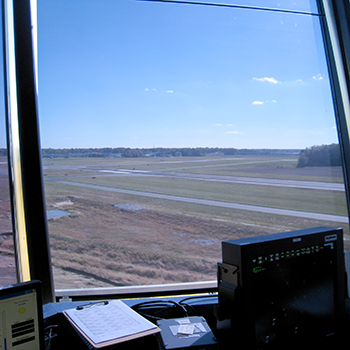Subscriber question:
“If Tower simply clears me to land, where does the controller expect me to touch down and where am I expected to exit the runway?” — Jim B.
John:
 “These are two separate questions. Let’s address one at a time.
“These are two separate questions. Let’s address one at a time.
When the tower issues a landing clearance, you own the entire runway unless the controller says otherwise (such as with a Land-and-Hold-Short clearance). There is nothing in the AIM or the FAA Controller Handbook that specifies a particular spot. The Pilot/Controller Glossary describes the touchdown zone as the first 3000 feet of the runway beginning at the threshold, but it doesn’t say you must land there.
For a day VFR arrival in a light GA airplane, most controllers would expect a touchdown somewhere in the first third of the runway, or between the numbers and 1000-foot markers.
If you want to land beyond the touchdown zone, say to avoid wake turbulence from a departing jet or shorten taxi time on a long runway, request a ‘long landing’. This gives the controller a heads up which helps keep a smooth sequence of arrivals and departures.
Now that you’ve landed, where are you expected to exit the runway?
The AIM says to exit the runway without delay at the first available taxiway or on a taxiway as instructed by ATC, once the aircraft has reached a taxi speed. An aircraft is expected to taxi clear of the runway unless otherwise directed by ATC. In the absence of ATC instructions, you should ensure that all parts of the aircraft are past the holding lines associated with the landing runway—even if that requires the aircraft to protrude into or enter another taxiway or ramp area. However, you should not exit the landing runway onto an intersecting runway, or cross a taxiway, unless authorized by ATC. At airports with an operating control tower, pilots should not stop or reverse course on the runway without first obtaining ATC approval.
One of my pet peeves is controllers who issue turnoff and taxi instruction to a pilot still in the flare or rollout. That is not the time for a pilot to take attention away from aircraft control to talk to a controller. If this happens to you, focus on the landing and deceleration. Only reply to ATC when it’s safe to do so.
Lately, I have been advising the controller of my destination on the airport when receiving the landing clearance. This helps the controller to plan where I should turn off the runway.”
Here’s some guidance on communications with Tower during landing operations from our VFR Communications manual.
Have you ever been chastized by Tower for failing to land and exit the runway in the manner they expected?
